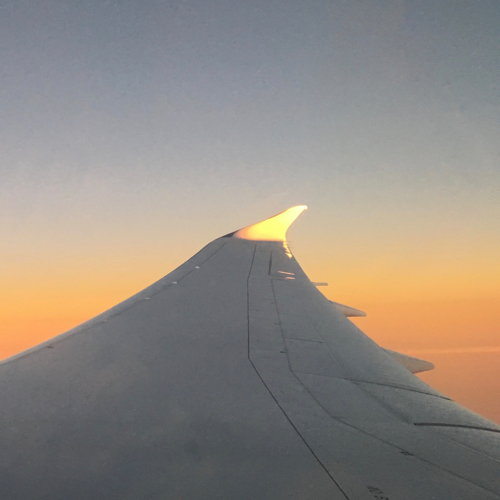flipdewaf wrote:I would be very surprised if the release was a simple spring released as how would you retract the spring and know it was going to reload.
I dont say, there will be a spring, I only say it could work this way:
- The force generated by the spring in compressed state would still far below the equivalent empty weight (say the compressed spring would lift 5000kg). As the fuselage behind the wig is only extends 26 inches, a rather low force could be sufficient to bridge the aoa gap.
- The spring would be reloaded at landing, stay fully compressed all the time and release the energy again at rotation again. As the empty weight on the main gear would far more than 5000kg, there would be no issues at all.
- The problem would be the undampened characteristics at landing. Possibly the resulting bouncing would not be tolerable.
flipdewaf wrote:Hydraulics make sense as it would fulfil the needs of the system and be a know quantity in terms of maintenance and design.
I agree about the advantages of an active hydraulic solution. It does tick off all the requirements. The proposal seems not to be the favorites for some posters though.
flipdewaf wrote:An oleo is already a spring (albeit a damped one) so adding another spring would make it just a different spring rate over a longer stroke.
As there exist different kind of oleos, I wonder whether by a small change, the spring force could be made available undampened for a short period (of rotation).
flipdewaf wrote:You are correct, the word actively is the important part. There is something (pilot, computer, squirrel ... it doesn’t matter) that actively decides when the energy is released. I would be very surprised if the release was a simple spring released as how would you retract the spring and know it was going to reload. Hydraulics make sense as it would fulfil the needs of the system and be a know quantity in terms of maintenance and design.
An oleo is already a spring (albeit a damped one) so adding another spring would make it just a different spring rate over a longer stroke.
An additional spring with a release mechanism would require logic to determine the time at which it was released, a system to load the spring with that force would likely need hydraulics for that high of a force or like was said would have to rely on it being loaded by the previous landing would need to ensure that there was enough energy imparted on the spring to load it otherwise you could have a wonky plane on landing and be too high for the exit requirement and need to load the it at the gate.
In essence springs are good at energy and for movements you need actuators.
flipdewaf wrote:You are correct, the word actively is the important part. There is something (pilot, computer, squirrel ... it doesn’t matter) that actively decides when the energy is released. I would be very surprised if the release was a simple spring released as how would you retract the spring and know it was going to reload. Hydraulics make sense as it would fulfil the needs of the system and be a know quantity in terms of maintenance and design.
An oleo is already a spring (albeit a damped one) so adding another spring would make it just a different spring rate over a longer stroke.
An additional spring with a release mechanism would require logic to determine the time at which it was released, a system to load the spring with that force would likely need hydraulics for that high of a force or like was said would have to rely on it being loaded by the previous landing would need to ensure that there was enough energy imparted on the spring to load it otherwise you could have a wonky plane on landing and be too high for the exit requirement and need to load the it at the gate.
In essence springs are good at energy and for movements you need actuators.
flipdewaf wrote:You are correct, the word actively is the important part. There is something (pilot, computer, squirrel ... it doesn’t matter) that actively decides when the energy is released. I would be very surprised if the release was a simple spring released as how would you retract the spring and know it was going to reload. Hydraulics make sense as it would fulfil the needs of the system and be a know quantity in terms of maintenance and design.
An oleo is already a spring (albeit a damped one) so adding another spring would make it just a different spring rate over a longer stroke.
An additional spring with a release mechanism would require logic to determine the time at which it was released, a system to load the spring with that force would likely need hydraulics for that high of a force or like was said would have to rely on it being loaded by the previous landing would need to ensure that there was enough energy imparted on the spring to load it otherwise you could have a wonky plane on landing and be too high for the exit requirement and need to load the it at the gate.
In essence springs are good at energy and for movements you need actuators.
flipdewaf wrote:You are correct, the word actively is the important part. There is something (pilot, computer, squirrel ... it doesn’t matter) that actively decides when the energy is released. I would be very surprised if the release was a simple spring released as how would you retract the spring and know it was going to reload. Hydraulics make sense as it would fulfil the needs of the system and be a know quantity in terms of maintenance and design.
An oleo is already a spring (albeit a damped one) so adding another spring would make it just a different spring rate over a longer stroke.
An additional spring with a release mechanism would require logic to determine the time at which it was released, a system to load the spring with that force would likely need hydraulics for that high of a force or like was said would have to rely on it being loaded by the previous landing would need to ensure that there was enough energy imparted on the spring to load it otherwise you could have a wonky plane on landing and be too high for the exit requirement and need to load the it at the gate.
In essence springs are good at energy and for movements you need actuators.
flipdewaf wrote:You are correct, the word actively is the important part. There is something (pilot, computer, squirrel ... it doesn’t matter) that actively decides when the energy is released. I would be very surprised if the release was a simple spring released as how would you retract the spring and know it was going to reload. Hydraulics make sense as it would fulfil the needs of the system and be a know quantity in terms of maintenance and design.
An oleo is already a spring (albeit a damped one) so adding another spring would make it just a different spring rate over a longer stroke.
An additional spring with a release mechanism would require logic to determine the time at which it was released, a system to load the spring with that force would likely need hydraulics for that high of a force or like was said would have to rely on it being loaded by the previous landing would need to ensure that there was enough energy imparted on the spring to load it otherwise you could have a wonky plane on landing and be too high for the exit requirement and need to load the it at the gate.
In essence springs are good at energy and for movements you need actuators.





